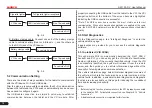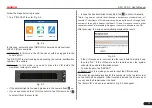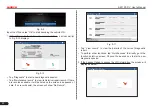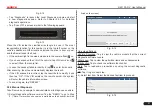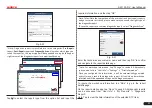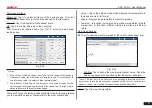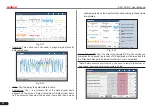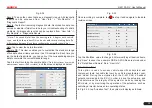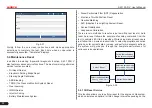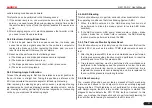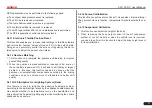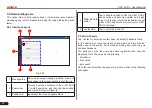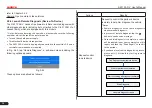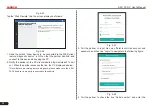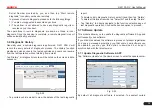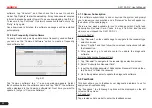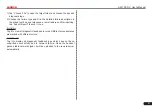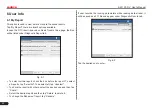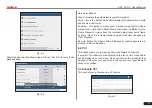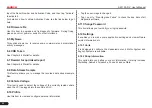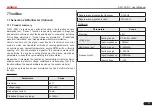
32
LAUNCH
X-431 PAD V
User's Manual
After the engine ECU, crankshaft position sensor, or crankshaft
flywheel is replaced, or the DTC ‘tooth not learned’ is present, tooth
learning must be performed.
5.4.7 IMMO Service
An immobilizer is an anti-theft mechanism that prevents a vehicle’s
engine from starting unless the correct ignition key or other device
is present. Most new vehicles have an immobilizer as standard
equipment. An important advantage of this system is that it doesn’t
require the car owner to activate it since it operates automatically. An
immobilizer is considered as providing much more effective anti-theft
protection than an audible alarm alone.
As an anti-theft device, an immobilizer disables one of the systems
needed to start a car’s engine, usually the ignition or the fuel supply.
This is accomplished by radio frequency identification between a
transponder in the ignition key and a device called a radio frequency
reader in the steering column. When the key is placed in the ignition,
the transponder sends a signal with a unique identification code to the
reader, which relays it to a receiver in the vehicle’s computer control
module. If the code is correct, the computer allows the fuel supply and
ignition systems to operate and start the car. If the code is incorrect or
absent, the computer disables the system, and the car will be unable
to start until the correct key is placed in the ignition.
To prevent the car being used by unauthorized keys, the anti-theft key
matching function must be performed so that the immobilizer control
system on the car identifies and authorizes remote control keys to
normally use the car.
When the ignition switch key, ignition switch, combined instrument
panel, ECU, BCM, or remote control battery is replaced, anti-theft key
matching must be performed.
5.4.8 Injector Coding
Write injector actual code or rewrite code in the ECU to the injector
code of the corresponding cylinder so as to more accurately control or
correct cylinder injection quantity.
After the ECU or injector is replaced, injector code of each cylinder
must be confirmed or re-coded so that the cylinder can better identify
injectors to accurately control fuel injection.
5.4.9 Battery Maintenance System Reset
This function enables you to perform a resetting operation on the
monitoring unit of vehicle battery, in which the original low battery fault
information will be cleared and battery matching will be done.
Battery matching must be performed in the following cases:
a) Main battery is replaced. Battery matching must be performed to
clear original low battery information and prevent the related control
module from detecting false information. If the related control
module detects false information, it will invalidate some electric
auxiliary functions, such as automatic start & stop function, sunroof
without one-key trigger function, power window without automatic
function.
b) Battery monitoring sensor. Battery matching is performed to re-
match the control module and motoring sensor to detect battery
power usage more accurately, which can avoid an error message
displaying on the instrument panel.
5.4.10 Diesel Particulate Filter (DPF) Regeneration
DPF regeneration is used to clear PM (Particulate Matter) from the
DPF filter through continuous combustion oxidation mode (such as
high temperature heating combustion, fuel additive or catalyst reduce
PM ignition combustion) to stabilize the filter performance.

